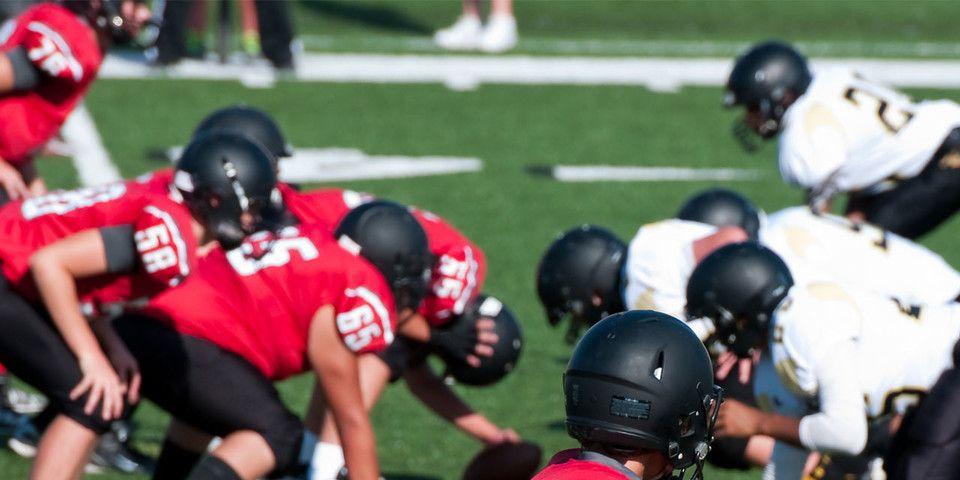Mountain Biking Can Be Dangerous; These Tips Will Help You Mitigate the Associated Risk.
Mountain biking can be a dangerous activity. The risk of mountain biking injuries, however, doesn’t mean that mountain biking should necessarily be avoided. Mountain biking, when approached with adequate caution and preparation, can be an excellent component of orthopaedic and general health. And with proper precautions, the risk of common mountain biking injuries can be effectively mitigated.
The Sports Medicine experts at Rothman Orthopaedic Institute have compiled the following list of key tips for staying safe and avoiding injury while mountain biking. Read and apply these tips before heading to the trails this season.
Mountain Biking Injury Prevention
There are two main types of orthopedic injuries that mountain bikers experience: mountain biking traumatic injuries (such as fractures, tears, or concussions due to a crash or fall) and mountain biking overuse injuries (such as muscle or ligament sprains, strains, and tears). We can help you to prevent both.
The following tips will help you to maximize the benefits of mountain biking while minimizing the associated risks.
-
Find a targeted fitness plan— and stick with it!
High-impact athletic activities, such as mountain biking, can present considerable strain on muscles, ligaments, and connective tissues if not supplemented with strength building exercises. A comprehensive fitness plan can help to build musculoskeletal strength and resilience; this, in turn, will help to mitigate the risk of overuse injuries. Focus in particular on core strengthening. -
Warm up prior to mountain biking.
Cold, stiff muscles and connective tissues are more prone to strains and sprains. Before beginning mountain biking activity, warm up for ten minutes and perform full-body stretches. Not only will this help to decrease the threat of strains and sprains, the overall reduction in physical stiffness will accelerate your reaction time and make you less likely to experience a crash. -
Stay adequately hydrated.
Much like musculoskeletal stiffness, dehydration can increase your risk of experiencing a traumatic injury. The fatigue caused by a lack of adequate hydration slows your physical responses and impairs your senses, resulting in a significantly increased threat of crashes. Dehydration itself may also cause serious health risks and complications. -
Lower your center of gravity.
Many cyclists make the mistake of remaining seated consistently during mountain biking activity. By getting out of your saddle, however, you can lower your center of gravity as your weight shifts from the bike seat to the pedals. This stabilizes you and reduces the risk of traumatic accidents; which is why it is especially recommended for rough, technical terrain. -
Learn how to fall well.
Not falling at all is naturally preferable to falling gracefully. The reality of mountain biking, however, is that falls will almost inevitably occur. Knowing how to properly eject and land is an essential skill. If a crash or loss of balance is occurring, lift one leg over the bike frame so that both legs are on one side; then, eject to the side of the bike, avoiding any obstacles.
Sports Medicine at Rothman Orthopaedic Institute
The above-listed tips can help to significantly reduce the risk of mountain biking injuries. Unfortunately, injuries do happen.
If an injury does occur, it is critical to promptly pursue effective, targeted orthopaedic care. That’s exactly what the Sports Medicine experts at Rothman Orthopaedic Institute specialize in providing. If you have experienced a mountain biking injury or an orthopaedic injury caused by athletics of any type, we can ensure that you receive the advanced treatments you need.
To learn more about Sports Medicine or to schedule an appointment, visit us here or contact us at 1-800-321-9999.
Related Specialties
Related Physicians
Related Conditions
- Ankle Sprains and Fractures
- Elbow Fracture
- Finger Fractures
- Finger Sprains
- Fracture of the Talus
- Hand Fractures
- Labral Tear
- Lisfranc Fracture/Dislocation
- Meniscal Tear
- Muscle Strains
- Olecranon Fracture
- Pelvic and acetabular fractures
- Periarticular Fractures
- Periprosthetic Fractures
- Radial Head Fractures
- Rotator Cuff Tear
- Sports Concussions
- Sprains and Strains
- Ulnar Collateral Ligament (UCL) Tear
- Wrist Fractures
- Wrist Sprains
Related Treatments
- Hand Fracture Treatment
- Non-operative Ankle Sprain and Fracture Treatments
- Non-operative Finger Fracture Treatment
- Non-operative Finger Sprain Treatments
- Non-operative Fracture of the Talus Treatment
- Non-operative Labral Tear Treatment
- Non-operative Lisfranc Fracture/Dislocation Treatment
- Non-operative Meniscal Tear Treatment
- Non-operative Muscle Strain Treatment
- Non-operative Olecranon Fracture Treatment
- Non-operative Radial Head Fracture Treatment
- Non-operative Rotator Cuff Tear Treatment
- Non-Operative Wrist Fracture Treatment
- Sports Concussion Treatment
- Sprain and Strain Treatment
Related Services
Related Programs
-

Injury Prevention Program
The Injury Prevention Program at the Rothman Orthopaedic Institute is dedicated to the prevention of injuries from athletic participation, particularly youth sports.Read More -

Women’s Sports Medicine Program
The Women’s Sports Medicine Program at the Rothman Orthopaedic Institute is the first of its kind in the Philadelphia metro area and one of only several such programs specializing in the comprehensive care of the female athlete in the country.Read More





